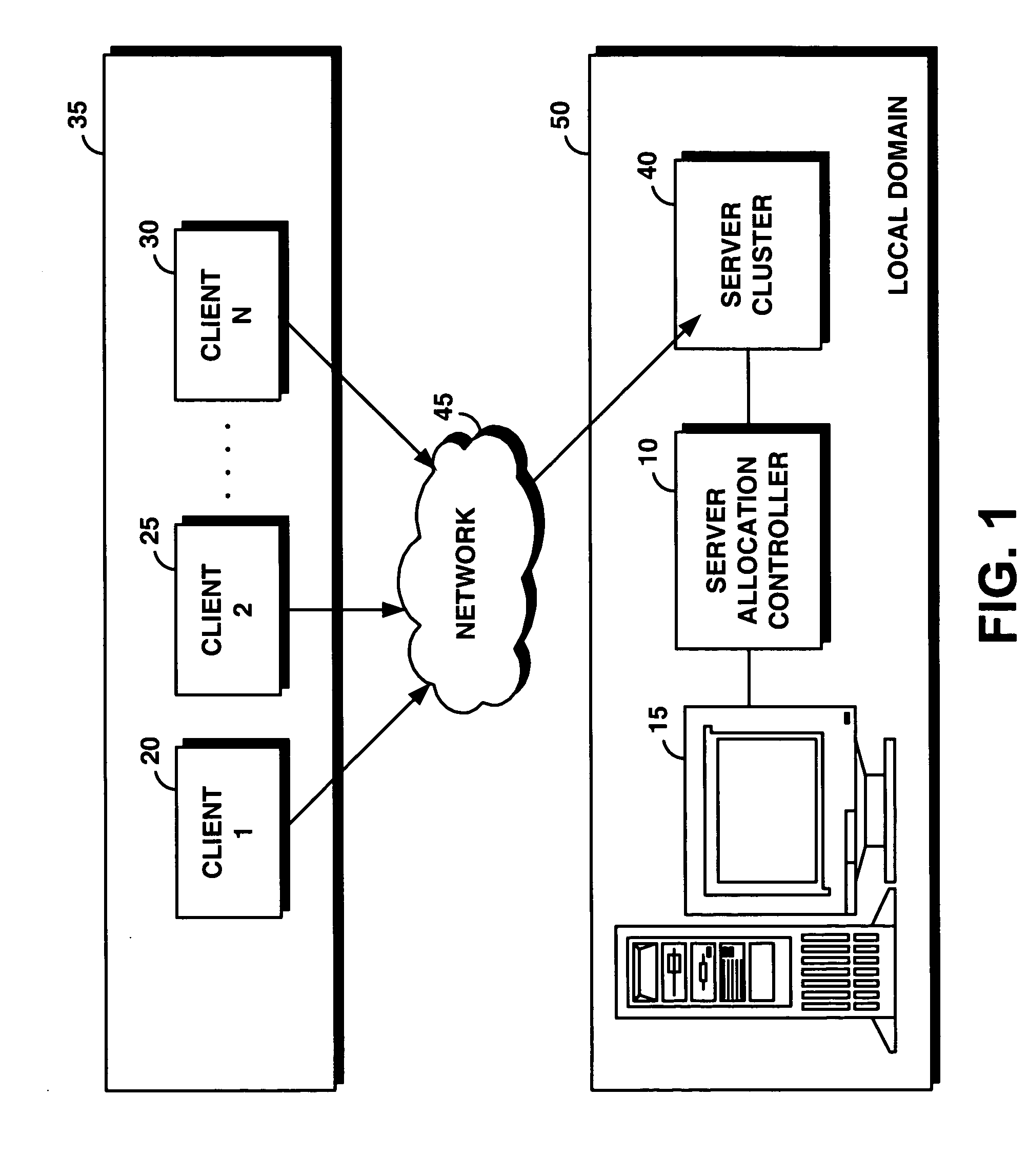System and method for supporting transaction and parallel services in a clustered system based on a service level agreement
a service level agreement and clustering technology, applied in the field of distributed data processing systems, can solve problems such as workload surges that are typically encountered, and achieve the effect of facilitating dynamic allocation of computing resources
- Summary
- Abstract
- Description
- Claims
- Application Information
AI Technical Summary
Benefits of technology
Problems solved by technology
Method used
Image
Examples
Embodiment Construction
[0021]FIG. 1 portrays an exemplary overall environment in which a system and associated method for supporting transaction and parallel services in clustered systems based on service level agreements according to the present invention may be used. A server allocation controller 10 comprises a software programming code or a computer program product that is typically embedded within, or installed on a server 15. Alternatively, the server allocation controller 10 can be saved on a suitable storage medium such as a diskette, a CD, a hard drive, or like devices.
[0022] Clients, such as client 1, 20, client 2, 25, client 3, 30, are collectively referenced as clients 35, and access a server cluster 40 via a network 45. Server 15 defines and supports a set of service level agreements corresponding to a mixture of transaction and parallel services running on the server cluster 40. Clients 35 invoke these services by making requests to the server cluster 40 through network 45.
[0023] The serve...
PUM
 Login to View More
Login to View More Abstract
Description
Claims
Application Information
 Login to View More
Login to View More - R&D
- Intellectual Property
- Life Sciences
- Materials
- Tech Scout
- Unparalleled Data Quality
- Higher Quality Content
- 60% Fewer Hallucinations
Browse by: Latest US Patents, China's latest patents, Technical Efficacy Thesaurus, Application Domain, Technology Topic, Popular Technical Reports.
© 2025 PatSnap. All rights reserved.Legal|Privacy policy|Modern Slavery Act Transparency Statement|Sitemap|About US| Contact US: help@patsnap.com



